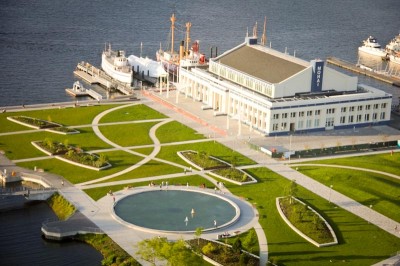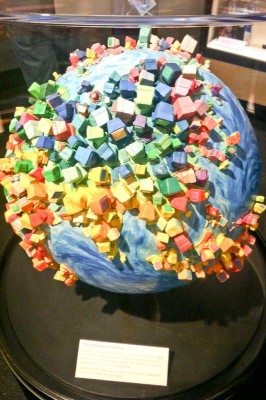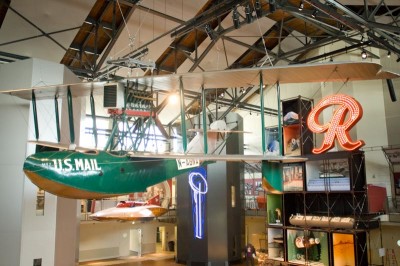
When I woke up New Years Day, I immediately regretted my plans to spend the day in a museum.
It was one of those uncharacteristically sunny winter days in Seattle. The kind where Seattleites crawl out of hibernation and the population of the city suddenly seems to double.
The sun glittered across Lake Union as I walked across the beautiful park that the Museum of History and Industry (MOHAI) now calls home. The museum moved from its original location in Montlake and, after a $60 million renovation, it’s more conveniently located and has space for its over 4 million historical artifacts.
But most importantly, with the move MOHAI has taken the opportunity to completely re-imagine the way Seattle’s story is told.
Seattle’s global ties are a huge part of our city’s story, from the rough and tumble pioneers to the powerhouse of industry and culture that it is today. The stories of immigrants, cultural conflict and global trade are woven throughout the new museum. Through it all, MOHAI does a remarkable job of expressing the inexpressible: there is something special about this place.

“From the time when Henry Yesler’s mill opened in March of 1853, commodifying all the timber that used to cover everything and shipping that lumber all over the Pacific Rim… this was a global place,” MOHAI’s public historian Dr. Lorraine McConaghy told me.
A life size sculpture of a Japanese Geisha gazes across MOHAI’s atrium. She was a gift from Kyoto to MOHAI at a trade fair Seattle hosted in 1952 in an effort to normalize relations with Japan after WWII.
On the other side of the atrium tiny ornate dolls are on display in a reminder of the way paranoia and racism played out at home during the war. The dolls were found abandoned in the homes of Japanese-Americans who were forcibly evacuated from their homes and sent to internment camps in 1942.
“I don’t think there’s rose colored glasses on this exhibit,” said Dr. McConaghy. “There are photographs and stories throughout the museum that deal with the contributions and the experiences, not always happy ones, of immigrants. Internment of people of Japanese descent gets major play, so do the anti-Chinese riots of 1886,” where unemployed white workers violently chased the Chinese workers out of the city.
As one of MOHAI’s videos says, “If Seattle is a nice place to live, it’s not because it’s always been a nice place to live, it’s because people have worked like hell to make things better.”
Of course, the world has not just changed Seattle. Seattle has also changed the world.
The first commercial plane that Boeing ever produced hangs in the atrium, poised to land as if it had never left the skies above Lake Union where it made the first ever international air mail run.
“We have exported Costco, Nordstroms, Starbucks, Boeing, Microsoft, Amazon I mean it kind of goes on and on…Boeing is the first high technology company, they’ve made the world smaller…Amazon reaches more than 282 million global visitors in a month.” said Dr. McConaghy.
For a small city, Seattle industries have had an unprecedented effect on the rest of the world

From the WTO protests, to Washington State’s House Un-American Activities Committee during the Cold War, to the 1962 World’s Fair, and the music industry now known the world over, Seattle’s status as a global city is complicated and remarkable.
As the same MOHAI video says “We have come from all over America and from all over the world and added our own inspiration to that of the place and those who preceded us to create something new we present to the whole world.”
The sun had already set when I left the museum. Hours had disappeared without my notice. The crystal clear skies were gone before I had even started to think about dinner plans, but I didn’t mind.
As we plunge into another soggy and cloudy January in Seattle, MOHAI gave me a much needed reminder of why I am so proud to call this place home.
A rundown of Seattle’s global stats via MOHAI historians:
- 23.2% of King County residents speak a language other than English at home.
- 20% of Seattleites were born outside of the US.
- Amazon’s website has reached more than 282 million global visitors, which is 20.4% of the world’s internet users.
- Microsoft requested 4,253 H-1B visas in one year, the most of any US employer.
- China is Seattle’s #1 trading partner, Japan is #2.
Today is MOHAI’s Free First Thursday, so admission is totally free, and this evening Pabst Brewing Company is sponsoring a celebration of the restoration of the Rainer Brewery’s historic “R”.

